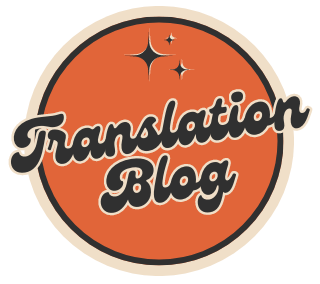Buying essays online has evolved from being a secret whispered about to a common part of student life. However, every click still raises the same important question: Is it really safe? It can be a wise decision to choose a reputable research paper writing service, and many services have proven their dependability and helped thousands of students. Nevertheless, when placing an order, students are sharing personal information, academic aspirations, and sometimes a portion of their savings. They also face strict school rules regarding originality, so the wrong choice can lead to accusations of plagiarism or even expulsion. On top of that, stories of hacked cards and leaked files add to the fear.
This article separates fact from fiction, allowing readers to assess the true level of risk. It examines how plagiarism is detected, why SSL payment pages are important, and the role of non-disclosure agreements (NDAs). By exploring both the dangers and the safeguards, the following guide offers clear steps students can take to protect their grades, wallets, and reputations when purchasing papers online. It also explains the legal and ethical boundaries set by universities, helping students make informed, responsible choices rather than hasty assumptions. Before diving into the details, it’s worth noting that security is not a single switch, but a scale. The security measures used by a reputable provider may differ from those used by a questionable freelancer on social media. By the end of the article, students will learn how to spot red flags, demand proof of originality, protect their payments, and safeguard their identity.

Understanding Academic Plagiarism and Detection Tools
Plagiarism is the greatest fear when buying an essay online, and for good reason. Universities now scan every major assignment through tools like Turnitin, SafeAssign, and Copyscape. These programs compare the submitted file against billions of web pages, journals, and past student papers. If big chunks match, the software highlights them in bright color and gives a percentage score. Many schools treat anything above 15 percent as suspect, so even a short copied phrase can raise alarms.
A safe essay provider knows this landscape and writes each paper from scratch. They also run internal checks before delivery, then attach a plagiarism report for the buyer to keep. Students should ask to see that report and verify the date on it. Another smart move is to skim the finished essay line by line; if the style suddenly shifts or uses sources the student never covered in class, that is a warning sign. Finally, buyers must remember that self-plagiarism counts too. Submitting an old lab report or recycled paragraph without permission can trigger the same penalties as stealing someone else’s work. By understanding how detection tools operate and what schools consider misconduct, students can judge whether a company’s originality claims hold water.
Evaluating Website Security and SSL Payments
Handing over a credit card number is another risky moment, especially when the deadline is near and stress is high. A secure site protects that data with SSL, the standard protocol that turns the browser’s padlock icon green. SSL encrypts information as it travels, so hackers see jumbled code instead of readable digits. Before paying, students should look for an address that starts with “https://,” a clear privacy policy, and the company’s name on the digital certificate. Clicking the padlock icon reveals issuer details; if they do not match the brand, walk away.
Safe providers often add extra layers such as two-factor authentication, payment gateways like PayPal or Stripe, and tokenized transactions that replace card numbers with single-use codes. These steps reduce the chance of chargeback scams and identity theft. Students can add their own safeguards by using a virtual card with a spending limit, or a prepaid debit card that carries no link to a primary bank account. It is also wise to avoid public Wi-Fi while paying, as open networks make eavesdropping easy. By treating the checkout page with the same care used for online banking, buyers can shrink financial risks to near zero and focus on the writing itself.
The Importance of Non-Disclosure Agreements (NDAs)
While plagiarism and payment safety get the headlines, privacy may be just as critical. A Non-Disclosure Agreement, or NDA, is a legal promise that the service will never share a client’s personal data or the content of an order. Good companies put this promise in writing as part of their terms or offer a standalone document on request. Under an NDA, staff writers cannot reuse paragraphs, and customer support cannot mention a buyer’s name to third parties. If a site refuses to sign, that silence should ring alarm bells.
Students should check how long the NDA lasts, what penalties exist for breaches, and whether the contract covers both parties. For example, some schools may demand that students reveal sources of outside help. An airtight NDA means the company must stay silent even under pressure, placing the legal risk back on the student’s shoulders alone. It is also wise to see where the firm is incorporated. An NDA governed by strict jurisdictions like the United Kingdom, Canada, or many U.S. states offers stronger recourse than one based in a tiny offshore island with lax enforcement. Ultimately, an NDA acts as the final lock on the vault that holds a student’s identity.
Spotting Reliable Writers and Avoiding Red Flags
Even with sound security and legal walls, the essay is only as good as the person who writes it. A trustworthy platform allows buyers to review samples, writer profiles, and verified ratings before placing an order. The best systems show each writer’s field, degree level, and success rate on past projects. They also offer open chat so the student can ask questions about sources, outline ideas, or formatting preferences.
Beware of writers who guarantee an “A+” or promise a twenty-page research paper in two hours. Such claims often rely on copying content or using AI scrambling tools that fool basic detectors but fail under deeper review. Another red flag is a price that seems too low to be true. Quality writers value their time; a rate under ten dollars a page usually means the paper is recycled or farmed out to an unskilled pool.
Communication style can also reveal a lot. If the writer’s messages are full of grammar errors, the final draft will likely reflect the same issues. Students should request a short preview or thesis statement early in the process. This small sample gives a chance to confirm voice and direction without risking the full fee. By combining these checks with earlier safeguards, buyers can align with a skilled, honest writer and avoid last-minute heartbreaks.
Practical Safety Checklist Before You Order
Before clicking the “Pay” button, students can slow down and walk through a short safety checklist. Each point takes only a minute yet blocks the most common traps.
• Verify the URL: Does it use “https://” and display a valid padlock certificate issued to the same company name?
• Read recent reviews: Scan independent forums and social media for patterns of missed deadlines, copied texts, or vanished refunds.
• Ask for a plagiarism report: A provider that refuses is likely re-selling content.
• Request a draft: Even a one-page outline shows whether the writer understands the topic.
• Check refund and revision policies: Clear terms signal accountability, while vague promises hide loopholes.
• Confirm NDA availability: Look for language that covers data retention limits and third-party sharing.
• Use a secure payment method: Virtual or prepaid cards add an extra wall between the essay site and a primary bank.
Once these steps are complete, students should keep a personal record. Saving chat transcripts, invoices, and the plagiarism report provides proof if trouble arises later. They should also store all sources cited in the paper, because many professors ask follow-up questions. Having links and PDFs on hand allows quick, confident answers.
The final piece of the checklist involves personal integrity. Even a flawless custom essay cannot replace learning. Students should read the delivered draft, note key arguments, and prepare to explain the ideas in their own words. This review not only sharpens understanding but also creates a natural defense if asked about the work. When safety measures and honest self-study meet in the middle, buying an essay becomes far less risky and, in some cases, a helpful learning aid rather than a shortcut.
Remember, no service can guarantee absolute safety, but informed customers tilt the odds in their favor. If a site meets every checkpoint, delivers an original draft, and respects privacy, the remaining risk is mostly about how the student uses the material. Turning the purchased text into a study guide, a reference, or a model outline is both safer and more educational than handing it in untouched. In short, caution plus responsible use transforms buying an essay from a gamble into a manageable decision.

